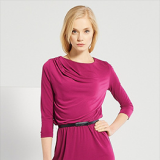- today
- perm_identity Jane Smith
- label Fashion Forward
- favorite 9 likes
- remove_red_eye 397 views
- comment 6 comments

With the fashion industry being one of the major contributors to environmental degradation, there's a pressing need for sustainable alternatives. Enter eco-friendly fabrics – materials that are kind to our planet while offering the same, if not better, quality and style.
But what makes a fabric eco-friendly? Typically, it's derived from sustainable resources, produced with minimal environmental impact, and is biodegradable or recyclable. Let's delve into some of the most popular eco-friendly fabrics revolutionizing the fashion world.
| Fabric | Source | Benefits |
|---|---|---|
| Bamboo | Bamboo plant | Fast-growing, requires no pesticides, biodegradable |
| Organic Cotton | Cotton plant without pesticides | Less water usage, no chemical pesticides, biodegradable |
| Tencel (Lyocell) | Wood pulp | Sustainable production, biodegradable, soft texture |
| Recycled Polyester | Recycled PET bottles | Reduces waste, conserves energy, durable |
Adopting eco-friendly fabrics is not just about reducing environmental impact. It's also about supporting ethical practices, promoting biodiversity, and conserving resources. As consumers become more conscious of their choices, the demand for sustainable fabrics is on the rise.
Brands, both big and small, are recognizing this shift and incorporating eco-friendly materials into their collections. From everyday wear to high-fashion runway pieces, sustainable fabrics are proving that style and responsibility can coexist.
In conclusion, eco-friendly fabrics are not just a trend; they represent the future of fashion. As we move towards a more sustainable world, these materials will play a pivotal role in shaping the industry's landscape.

Comments (6)